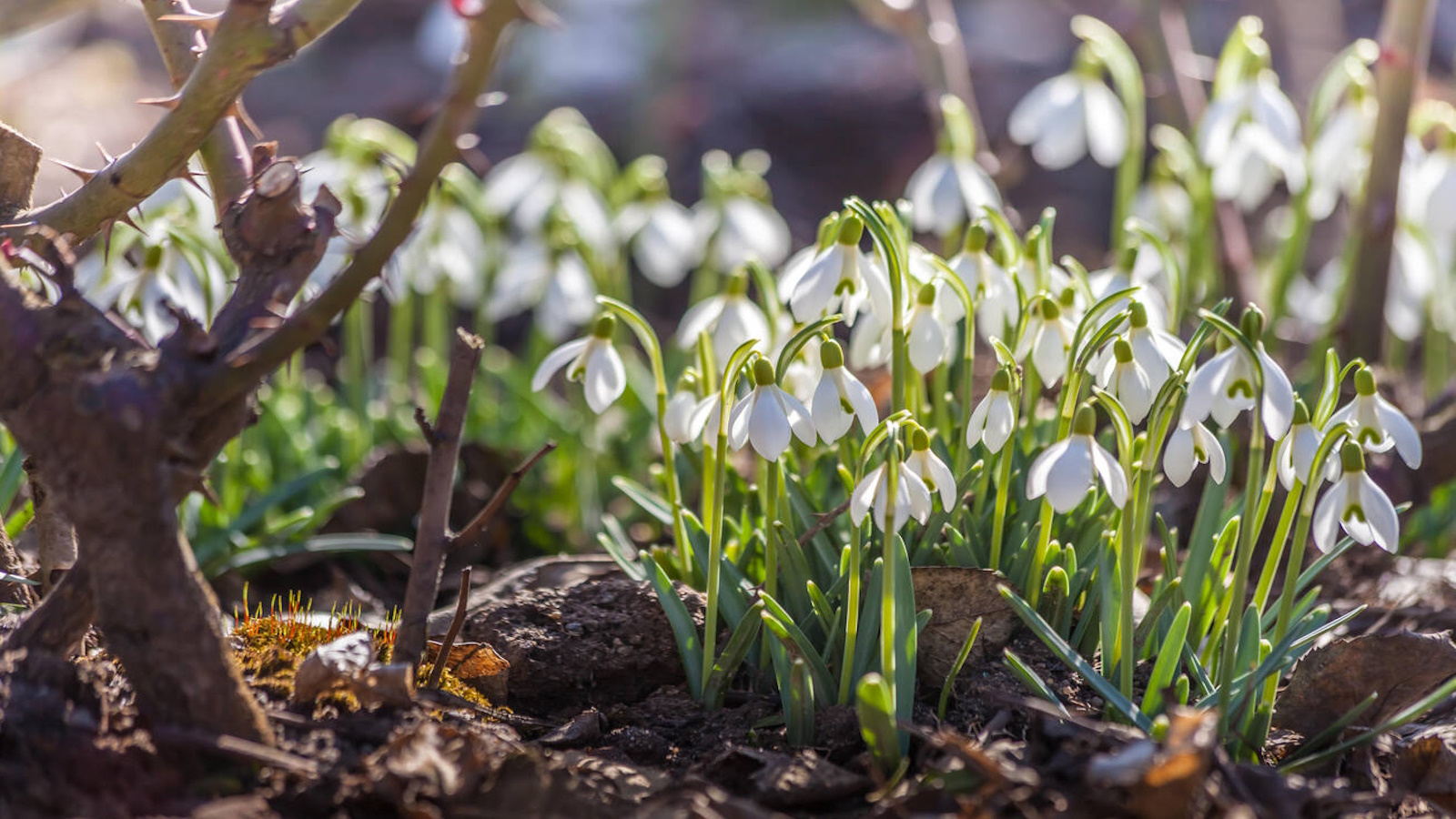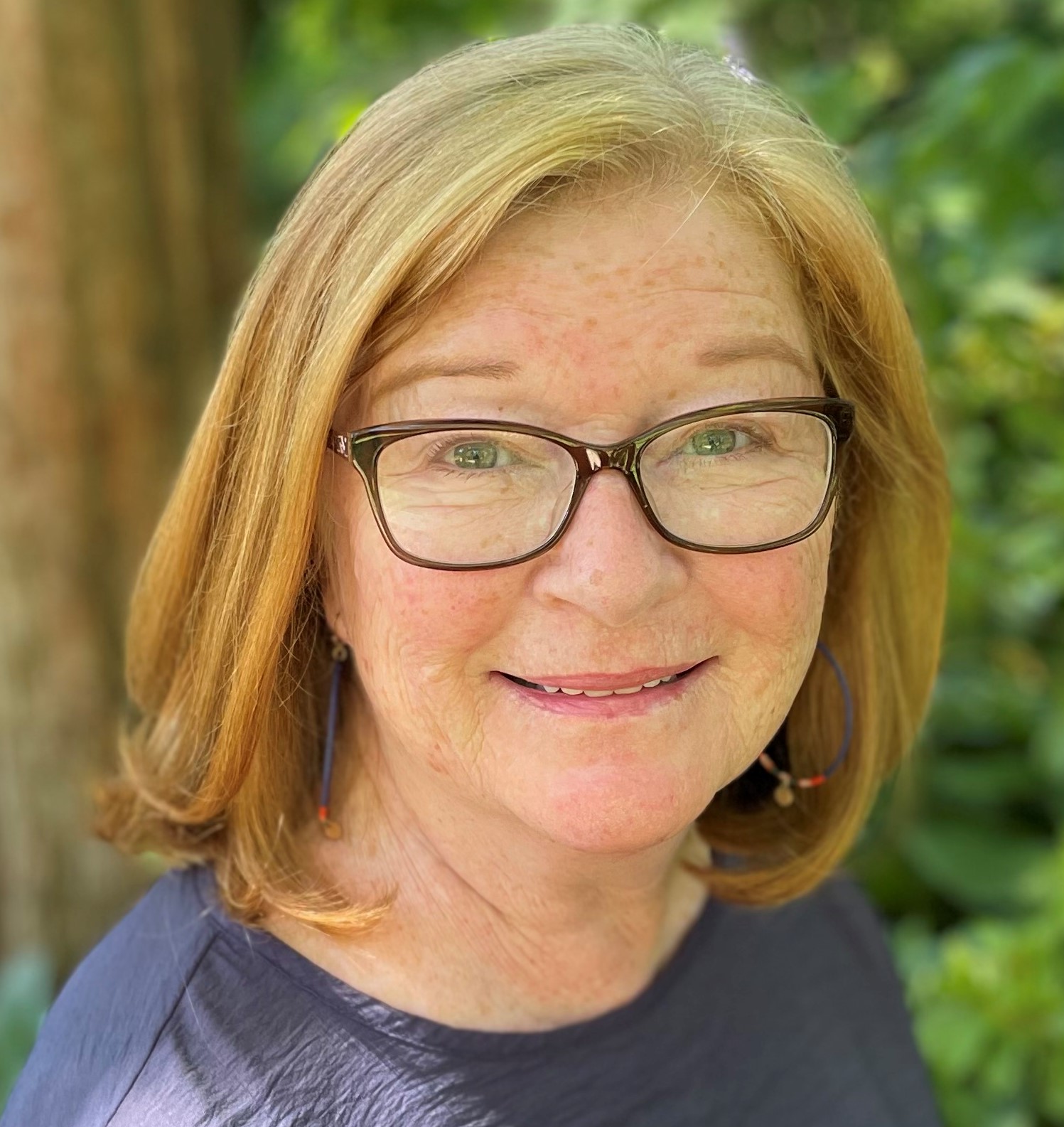Why plant snowdrops 'in the green'? Experts explain all
Planting snowdrops 'in the green' is not tricky, in fact it keeps bulbs healthy and encourages bumper blooms


Planting snowdrops ‘in the green’ is a great way to fill your yard with winter charm. The arrival of these delicate blooms, with their white, nodding heads and subtle scent, are a clear sign that spring is around the corner, but these flower bulbs can be tricky to get started.
These blooms can be planted as dry, dormant bulbs in fall, but success can vary. As a result, many galanthophiles (aka avid snowdrop collectors) and pro gardeners insist on planting snowdrops ‘in the green’ - and it’s really not as complicated as it sounds. It refers to the plant immediately after it has flowered but still has green leaves intact.
Learning why this is especially important with snowdrops, plus when and how to do this, can make a huge difference to your winter garden. Yielding spectacular results, soon pots and borders will be brimming with these elegant frost-hardy flowers and lawns transformed into a floral sea of white.

Planting snowdrops 'in the green'
'Snowdrops are beautiful planted in drifts by themselves or grown with yellow winter aconites (Eranthis hyemalis), pink, spring cyclamen (Cyclamen coum) or very early crocus like Tommies (C. tommasinianus),' says horticultural expert Peggy Anne Montgomery.
'They provide an essential early pollen and nectar source for pollinators, especially bees and they let us know that the growing season has begun and the light is returning.'
Why plant snowdrops 'in the green'?

A popular practice in the UK, planting snowdrops ‘in the green’ is a great way to introduce these winter beauties into your yard. It’s also handy for making the most of any clumps you do have and helping them to spread around the garden.
'Hardy in zones 3-7, plant snowdrop bulbs in the fall months with other spring planted bulbs,' says Katie Sunderlage, of the Holland Bulb Group, 'but they are a bit more finicky to become established when planted in the fall months.'
Often drying out altogether or at risk of being dug up - either accidentally or by birds and wildlife - these small flower bulbs can perish before even setting down roots.
A more successful technique is to wait until the bulbs emerge from their natural dormant period, which for snowdrops occurs during summer through to late fall. Katie explains: 'The method of planting ‘in the green’ means bulbs are planted right after flowering in early spring, while there is still green foliage actively growing on the plant.'
Peggy Anne Montgomery points out that, 'Planting snowdrops 'in the green' is much more common in the UK than in the US. The idea is that you plant the bulbs in early spring after they have flowered but while they still have their green leaves.'
She explains that 'many believe this is the best way to establish snowdrops because they have more time to establish themselves before they bloom the following year.'

Peggy Anne Montgomery is a horticultural professional with more than 30 years of US and international experience in garden marketing and communications. An account executive for the Garden Media Group, she currently represents Dutch Royal Anthos, a trade organization for Dutch bulb growers and exporters in the US and Canada.

Operations Manager at Holland Group, managing the customer service department and purchasing, Katie Sunderlage has been in the green industry since 2005 in the Greater Milwaukee area, earning her degree in horticulture in 2008. She has been able to share her love for plants working in multiple garden centers, in sales positions and most recently in an online retail platform at Holland Group.
When to plant snowdrops 'in the green'

The ideal time to plant snowdrops 'in the green' is when the blooms start to fade, the stems wilt but the long green leaves remain intact and healthy. This indicates that the energy stored within the bulb has been spent producing flowers and that the green foliage is working hard to replenish those energy stores through photosynthesis.
With few leaves on the trees to block out sunlight and the daylight hours lengthening, this process happens relatively quickly over a period of weeks before the leaves die back and the bulb becomes dormant.
'This is the perfect time to divide and replant your own snowdrops,' continues Peggy Anne. 'If you have an abundance, share them with your friends and family. Or, if you know someone who has quite a few, I’d bet they would share. Plant people are good people.'
A brilliant and satisfying way to fill your yard for free, your hard work will continually be rewarded every winter. 'My husband is diligent about dividing our bigger clumps and starting new colonies in the garden every year,' says Peggy Anne. 'Thanks to him, we have thousands. We grow them in our bulb lawn, fern glade, under deciduous trees and shrubs and in the meadow.'
How to plant snowdrops 'in the green' like a pro

If you wish to plant snowdrops 'in the green', speed is of the essence. Nursery bought or mail order 'green' bulbs should arrive wrapped in paper to keep them damp and able to breath while in transit.
Carefully unwrap or 'gently lift the bulbs from the ground while the foliage is still green and transplant to the same depth,' advises Katie. 'You should be able to see a soil line on the foliage to know how deep they should be planted.'
Once planted and settled in their new spot, be sure to water the bulbs thoroughly, but only once.
Katie explains: 'It's important to let them dry out after an initial drenching, as the foliage can then die back naturally as part of their natural life cycle.'
She also cautions, 'mot to cut back any foliage until it has completely died back to ensure enough moisture and nutrients are stored for the following year's growth.'
FAQs
Do planted snowdrops need much care and attention?
'One of the nice things about snowdrops is, once established, they are virtually maintenance free,' says bulb expert Katie Sunderlage. 'We do recommend dividing them while in the green every 3-4 years to keep them healthy and thriving. Dividing the bulbs promotes stronger plants and more prolific blooming if done every few years.'
Tempted to find out which early spring bulbs to plant next? Check out these expert recommendations on the best snowdrops to grow.
Sign up to the Homes & Gardens newsletter
Design expertise in your inbox – from inspiring decorating ideas and beautiful celebrity homes to practical gardening advice and shopping round-ups.

Journalist Jill Morgan has spent over 20 years writing and editing gardening, interior and property features. Titles she has worked on include The English Home, House Beautiful, Ideal Home, Houzz and Modern Gardens and she writes regularly for H&G as a Contributing Editor. Whilst she is a dab hand at renovation projects and DIY, she is happiest when out digging in the garden or planning a new border.
-
 Plants never to grow next to fruit trees
Plants never to grow next to fruit treesExpert advice on which plants to keep away from fruit trees to encourage a healthy harvest
By Jacky Parker Published
-
 Martha Stewart's tips for arranging daffodils are unbelievably simple and effective – it's the only flower advice you need this springtime
Martha Stewart's tips for arranging daffodils are unbelievably simple and effective – it's the only flower advice you need this springtimeMartha shows us that we can create gorgeous bouquets of this seasonal flower by simply trimming the stems and placing them in specific vases
By Hannah Ziegler Published